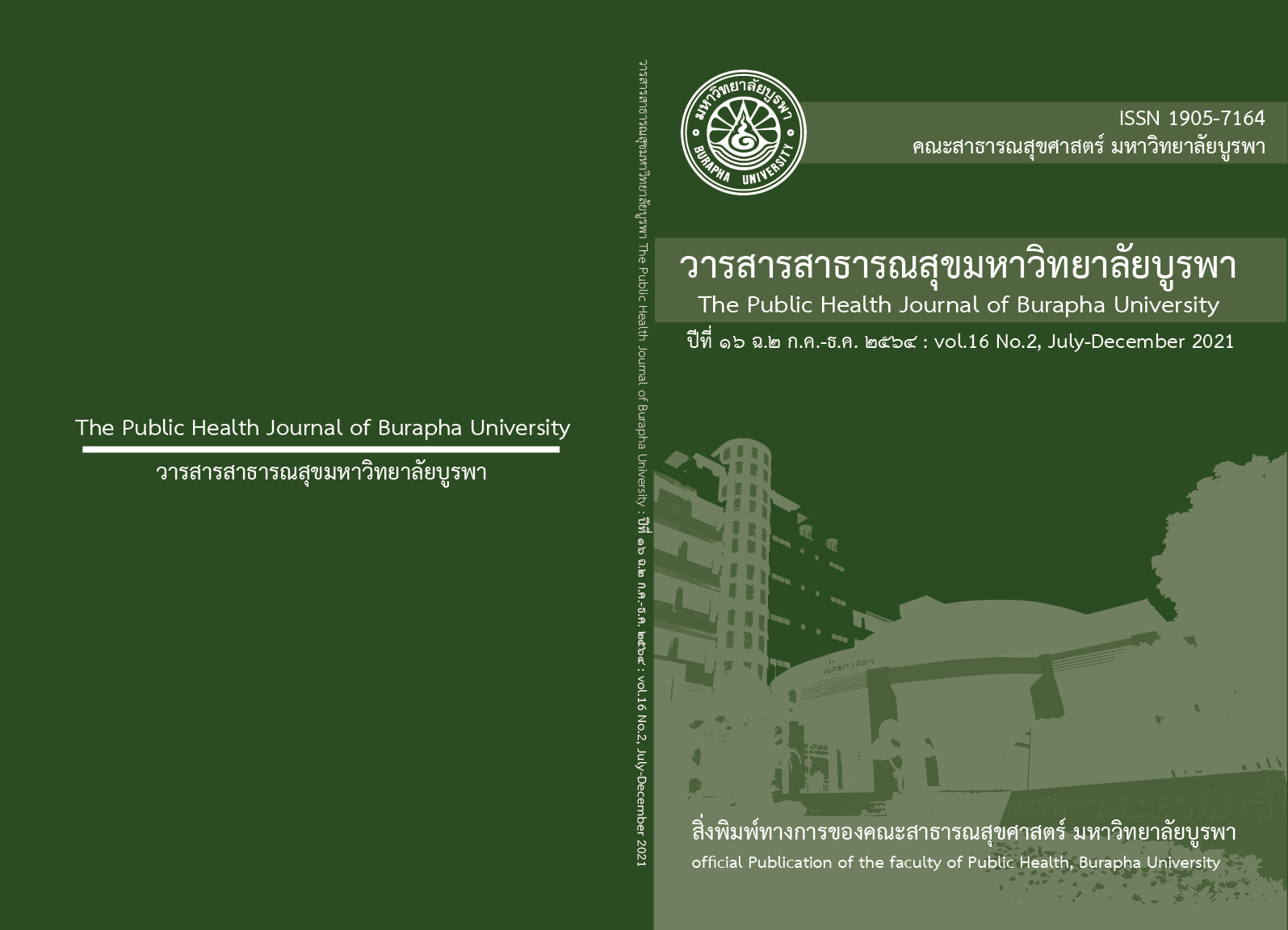แนวทางเลือกสำหรับการกำจัดโรคไข้มาลาเรียโดยองค์การปกครองส่วนท้องถิ่นในประเทศไทย : การควบคุมพาหะแบบเจาะจง การควบคุมพาหะแบบผสมผสาน และการจัดการพาหะแบบผสมผสาน
Main Article Content
บทคัดย่อ
การควบคุมพาหะเป็นกลยุทธ์สำคัญหนึ่งในการดำเนินโปรแกรมการกำจัดโรคไข้มาลาเรียตามแผนยุทธศาสตร์และแผนปฏิบัติการกำจัดโรคไข้มาลาเรีย ซึ่งกำหนดเป้าหมายให้ทุกอำเภอของประเทศไทยไม่มีการแพร่เชื้อมาลาเรียในพื้นที่ติดต่อกันอย่างน้อย 3 ปี ภายในปี 2567 บทความนี้ได้นำเสนอกรอบการเปลี่ยนกระบวนทัศน์ในการควบคุมพาหะ ได้แก่ การควบคุมพาหะแบบเจาะจง การควบคุมพาหะแบบผสมผสาน และการจัดการพาหะแบบผสมผสาน ซึ่งใช้เป็นแนวทางเลือกเชิงกลยุทธ์การควบคุมพาหะโดยองค์กรปกครองส่วนท้องถิ่น เช่น องค์การบริหารส่วนตำบลหลายแห่งทั่วประเทศ ให้สามารถปรับใช้และนำแนวทางเลือกสำหรับการควบคุมพาหะไปใช้ ให้เหมาะสมกับสภาพพื้นที่รับผิดชอบซึ่งยังคงมีพื้นที่แพร่โรคหรือพื้นที่เสี่ยงแพร่โรคไข้มาลาเรีย และเป็นพื้นที่เป้าหมายของการดำเนินงานโปรแกรมการกำจัดโรคไข้มาลาเรียทั่วประเทศ
Article Details

อนุญาตภายใต้เงื่อนไข Creative Commons Attribution-NonCommercial-NoDerivatives 4.0 International License.
เอกสารอ้างอิง
2. World Health Organization. Ministerial Conference on Malaria, Amsterdam, The Netherlands, 26-27 October 1992. SEA/RC45/14.
3. World Health Organization: MDG 6: combat HIV/AIDS, malaria and other diseases. http://www.who.int/topics/millennium_development_goals/diseases/en/index.html.
4. World Health Organization: Malaria Global Fund Proposal Development. WHO Policy Brief May 2010. http://www.who.int/malaria/publications/atoz/malaria_gf_proposal_dev_who_policy_brief_201106.pdf.
5. World Health Organization. Vector control for malaria and other mosquito-borne diseases. WHO Technical Report Series 857. Geneva: World Health Organization; 1995.
6. Global Fund To Fight AIDS, Tuberculosis and Malaria: The Global Fund Annual Report 2002/2003. Geneva: GFATM; 2003:1–100. http://www.theglobalfund.org/en/library/publications/annualreports/
7. World Health Organization: World Malaria Report 2010. Geneva: WHO. http://www.who.int/malaria/publications/atoz/9789241564106/en/index.html.
8. กรมควบคุมโรค กระทรวงสาธารณสุข. ยุทธศาสตร์กำจัดโรคไข้มาลาเรียประเทศไทย พ.ศ.2560-2569 และแผนปฏิบัติการกำจัดโรคไข้มาลาเรียประเทศไทย พ.ศ. 2560-2564. กรุงเทพมหานคร: ชุมนุมสหกรณ์การเกษตรแห่งประเทศไทย; 2560.
9. Bhumiratana A, Intarapuk A, Sorosjinda-Nunthawarasilp P, Maneekan P, Koyadun S. Border malaria associated with multidrug resistance on Thailand-Myanmar and Thailand-Cambodia borders: transmission dynamic, vulnerability, and surveillance. BioMed Res Int 2013; 2013: 363417.
10. สุริโย ชูจันทร์, อดิศักดิ์ ภูมิรัตน์. แนวทางเชิงกลยุทธ์การพัฒนานาคาโมเดลสำหรับการจัดการกำจัดโรคไข้มาลาเรียโดยองค์การบริหารส่วนตำบลนาคาและการมีส่วนร่วมของภาคีเครือข่ายระดับตำบลนาคา. วาสารวิชาการสาธารณสุข 2564. (กำลังตีพิมพ์)
11. Pimnon S, Bhumiratana A. Adaptation of Anopheles vectors to anthropogenic malaria-associated rubber plantations and indoor residual spraying: Establishing population dynamics and insecticide susceptibility. Canadian J Infect Dis Med Microbiol 2018; 2018: 9853409.
12. Sorosjinda-Nunthawarasilp P, Bhumiratana A. Ecotope-based entomological surveillance and molecular xenomonitoring of multidrug resistance malaria in Anopheles vectors. Interdiscip Perspect Infect Dis 2014;2014: 269531.
13. Kaewwaen W, Bhumiratana A. Landscape ecology and epidemiology of malaria-associated rubber plantations in Thailand: integrated approaches to malaria ecotoping. Interdiscip Perspect Infect Dis 2015; 2015: 909106.
14. Bhumiratana A, Sorosjinda-Nunthawarasilp P, Kaewwaen W, Maneekan P, Pimnon S. Malaria-associated rubber plantations in Thailand. Trav Med Infect Dis 2013; 11: 37-50.
15. Satitvipawee P, Wongkhang W, Pattanasin S, Hoithong P, Bhumiratana A. Predictors for malaria-association rubber plantations in Thailand. BMC Public Health 2012; 12: 1115.
16. Hauser G, Thiévent K, Koella JC. The ability of Anopheles gambiae mosquitoes to bite through a permethrin-treated net and the consequences for their fitness. Sci Rep 2019; 9: 8141.
17. Kakko I, Toimela T, Tähti H. Piperonyl butoxide potentiates the synaptosome ATPase inhibiting effect of pyrethrin. Chemosphere 2000; 40: 301-305.
18. World Health Organization. Instructions for treatment and use of insecticide-treated mosquito nets: Use insecticide-treated mosquito nets to sleep in peace – and protect your health. Geneva: WHO, 2002. WHO/CDS/RBM/2002.41. WHO/CDS/WHOPES/GCDPP/2002.4
19. World Health Organization. Conditions for use of long-lasting insecticidal nets treated with a pyrethroid and piperonyl butoxide, WHO Evidence Review Group Meeting report , 21–23 September 2015 Geneva, Switzerland. 2015.
20. World Health Organization. Long-lasting insecticidal nets for malaria prevention: A manual for malaria programme managers. 2007.
21. The Seventieth World Health Assembly. Global vector control response: an integrated approach for the control of vector-borne diseases, 31 May 2017. WHA70.16.

